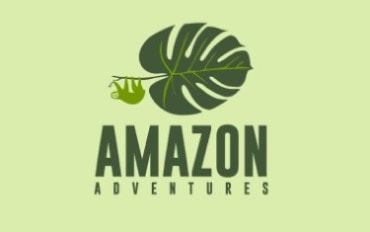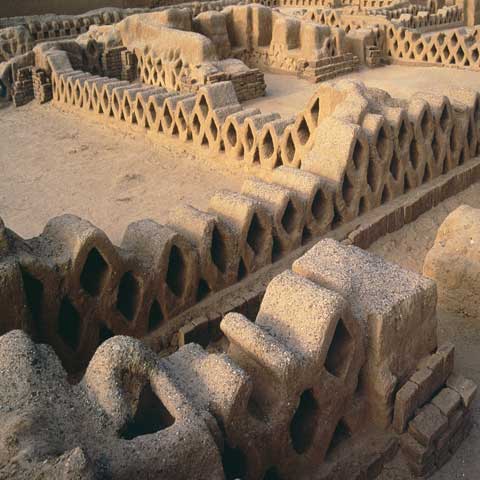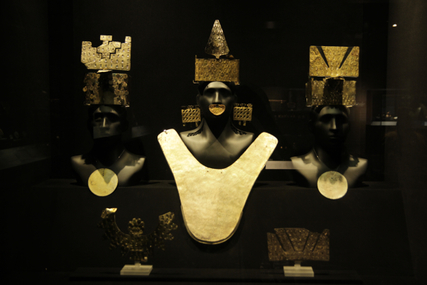Trujillo and Chiclayo ToursAn area of great and diverse interest: elegant Spanish cities like Trujillo and former Indian settlements like Cajamarca, Chiclayo and Piura. Monumental ruins of highly-skilled pre-Inca cultures; CHAN CHAN, KUELAP and a region poised for major tourist development; SIPAN, BATAN GRANDE, HUACA EL BRUJO AND MORO.
|
Northern KingdomsDAY 1| ARRIVAL IN TRUJILLO
A transport service will take you to the selected hotel. In the afternoon, enjoy a brief tour of the attractions of Trujillo. As an important city during the colonial era, Trujillo has managed to conserve its beautiful buildings and mansions of the time.
DAY 2 | TRUJILLO – HUACAS DEL SOL & LA LUNA – CHAN CHAN – HUANCHACO Arriving in the Moche Valley, be greeted by a traditional family descended from the ancient settlers who built the impressive Pyramids of the Sun and the Moon, the center of power on the northern coast of Peru during Moche times. After visit the impressive Pyramids of the Sun and the Moon, the center of power in the Trujillo Valley during the Moche times. Notice the amazing group of adobe frescoes on one of the walls of the Temple of the Moon, unearthed by archaeologists. We continue towards Huanchaco, an ancient fisherman’s cove where the ancient boats called "Caballitos de Totora" will be appreciated. The ancient tradition of artisanal fishing is maintained. In the afternoon visit the ancient citadel of Chan Chan, whose extension is 18 km2 approx. Enter the Nik-An Palace, located in the south-west part of Chan Chan touring its ceremonial squares, worshippers, reservoirs, barns, cemeteries, etc.
DAY 3 | TRUJILLO – EL BRUJO COMPLEX - CHICLAYO The El Brujo Archaeological Complex is of great importance to learn about the Moche culture. Located in the valley of the Chicama River, 60 kilometers from Trujillo, it's the house of one of the most impressive discoveries of recent years: the mummy of the Lady of Cao, the Mochica ruler that changed the perception of women in ancient Peru. The complex consists of three pyramids: Huaca Prieta, Huaca Cao Viejo and Huaca Cortada. Huaca Cao Viejo is the main enclosure, with decorative friezes and a ceremonial square. It was there where the funeral bundle of the Lady of Cao was found, in a tomb denoting her importance. The body was almost intact thanks to the techniques used for mummification and adorned with tattoos and jewelry such as necklaces, earmuffs and filigree nose rings, made with gold, silver, copper, semi-precious stones and shells. After the visit, you will follow the road by road to your hotel in the city of Chiclayo.
DAY 4 | CHICLAYO – TÚCUME – ROYAL TOMBS MUSEUM – HUACA RAJADA After a delightful breakfast at the hotel, head towards the archaeological complex of Tucume. With more than 200 hectares, the complex houses 26 monumental buildings associated with lower-level structures such as plazas, murals, courtyards and canal systems, reflecting a policy of planned growth and the unique social structure of Lambayeque. Visit the site museum to have a better idea of what life was like during that period. Then transfer to Lambayeque to visit the Royal Tombs Museum. Due to the discovery of the Lord of Sipan, whose importance was demonstrated in the complexity of his funeral and its apparent semi-divine condition, a new museum was created. After lunch in a typical restaurant, head to the archaeological complex of Huaca Rajada, an inspiring set of huge adobe pyramids. The place gained special notoriety in 1987 when Dr Walter Alva, then director of the Brünning Museum in Lambayeque, became aware of the clandestine excavations that were taking place. And what then began as a protection plan ended with the magnificent discovery of the tomb of the Lord of Sipan, one of the most impressive pre-Columbian burials in Peru. Afterwards, go back to your hotel to collect your belongings and enjoy a transfer from your hotel to the Chiclayo airport for your onward travels.
2024 Price per person in US$:
INCLUDED
|
Interesting Sites
TRUJILLO The traveler entering Trujillo is delighted with its surrounding greenness against a backcloth of brown Andean foothills and peaks. Founded by Francisco Pizarro in 1536 (and named after his native town in Spain), it still retains many old churches, graceful colonial balconies and windows overhanging its modern pavements of homes built during the reigns of the Viceroys. Besides the Cathedral it has 10 colonial churches as well as convents and monasteries, Trujillo it is also a base to visit Chan Chan, Huaca Arco Iris, Huanchaco, Sican and El Brujo. CHAN CHAN, HUANCHACO 5km from Trujillo is the imperial city of the CHIMU - the largest adobe city in the world. The ruins consist of nine great compounds built by CHIMU kings. The nine meter high perimeter walls surrounded sacred enclosures with usually one narrow entrance. Inside, serried rows of storerooms contained the agricultural wealth of the kingdom, which stretched 1000km along the coast from near Guayaquil to Paramonga. Huanchaco is a fishing village and it is worth seeing the narrow pointed fishing rafts, known as Caballitos (little horses), made of Totora reeds and used in many places along the Peruvian coast. CHICLAYO
Was founded in 1560 as a rural Indian village now has a population over 280,000. Chiclayo has a distinctive cuisine and musical tradition (Marinera, Tondero and afro-Indian rhythms), has a beautiful neoclasical Cathedral and a daily market (one of the northern Peru's liveliest) . It is the base to visit Sipan,Pampagrande, Tucume, Bruning Museum and many interesting sites. Chiclayo can also be the starting point for a visit to the fabulous unexcavated areas os Chachapoyas, home of the "Warriors of the Couds". SIPAN AND BRUNING MUSEUM A short distance from Chiclayo rises the imposing complex of Sipan (a Moche word meaning House of the Moon), where excavations since 1987 have brought to light a cache of funerary objects considered to rank among the finest examples of precolumbian art. In the most extravagant Moche tomb discovered (1800 years old), El Senor de Sipan, a priest was found clad in gold; ear ornaments, breast plate, etc. with turquoise and other valuables. A visit to Bruning Museum in Lambayeque is also included. Specializing in Mochica, Lambayeque, Chimu and Vicus cultures, it has a fine collection of Sipan and Lambayeque gold. |




